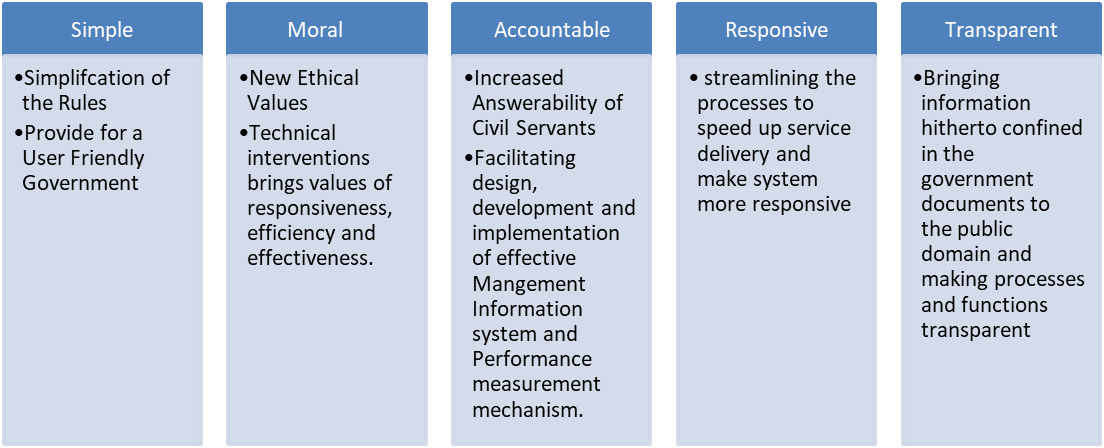Free Courses Sale ends Soon, Get It Now


Free Courses Sale ends Soon, Get It Now



Figure 4: Smart Governance
|
BASIS FOR COMPARISON |
E-GOVERNMENT |
E-GOVERNANCE |
|
Meaning |
The application of ICT, with the aim of supporting government operations, aware citizens and deliver services is called as e-Government. |
e-Governance refers to the use of ICT in enhancing the range and quality of information and services delivered to the public, in an effective manner. |
|
What it it? |
System |
Functionality |
|
Communication Protocol |
One way communication protocol |
Two way communication protocol |
It aims to provide for the legal framework so that legal sanctity is accorded to all electronic records and other activities carried out by electronic means.
The 10-point agenda of the Department of Information Technology announced for growth of ICT in the country includes expeditious implementation of a ‘National E-Governance Plan’ to bring about transparency and citizen centric approach in administration.
© 2024 iasgyan. All right reserved